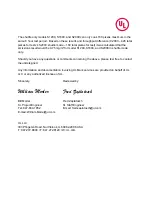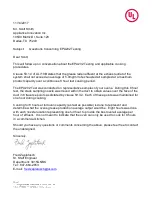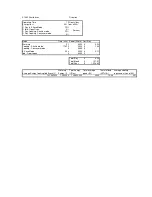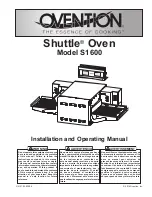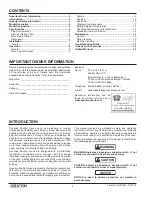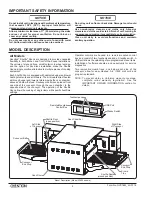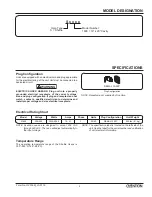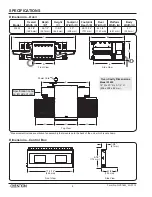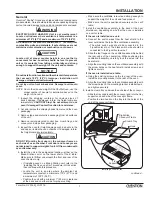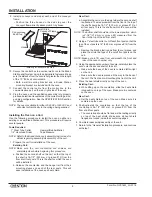
Page 2 of 2
A P P E N D I X: A
TEST FOR EVOLUTION OF SMOKE OR GREASE-LADEN AIR:
The Appliance Innovation Inc. Model C2000 conveyor oven was tested using the method derived
from EPA Method 202.
A 12 in. by 6 in. rectangular, 108 in. tall sheet metal stack was constructed on top of a sheet
metal hood and mounted above the exhaust vent of the induction cooker. A sampling port was located
approximately 80 in. downstream from the hood exhaust, at which point it was determined there was
laminar flow. The hood exhaust was maintained at 500 CFM throughout the duration of testing. The
sampler was assembled and an out of stack filter was used. A pre-leak check was conducted and
determined to be < 0.02 ft/min. Sampling was done at 8 traverse points.
The oven with integral system was operated normally by cooking the following foods:
12 in. pepperoni pizza (Tombstone, with 19 pepperonis per pizza), each cooked for 3 minutes
with 0 seconds between loads for 8 hours (total of 426 pizzas). Oven was set to maintain 525 °F
Temp
Event #
% Time.
% Top
Fan
% Bottom
Fan
% Microwave
Energy
525°F 1 3:00
85
85
n/a
During the cooking operation, it was noted whether or not visible effluents evolved from the air
exhaust of the hood. Gauge, meter and temperature readings were taken and recorded every 10 min.
After cooking, the condition of the duct was noted and a post-leak check was conducted and determined
to be < 0.02 ft³/min.
After being allowed to cool, the sampling equipment was disassembled; the filter was removed,
and placed into a sample container labeled No. 1. The liquid in impingers Nos. 1, 2, and 3 were
volumetrically measured and transferred to sample container No. 3. The silica gel and impinger No. 4
was transferred to sample container No. 5. The nozzle, probe and impingers were rinsed three times with
water and the rinse was added to container No. 3. These parts were also rinsed three times with acetone
and transferred to container No. 4. All additional inter surfaces of the sampling terrain glassware were
rinsed with methylene chloride three times; the rinse was transferred to container No. 6. A blank of
acetone approximately equivalent to the amount used for rinses was aliquoted into container No. 2, the
same was done for the distilled de-ionized water and methylene chloride except that these were aliquoted
into their own individual containers labeled No. 7 and 8 respectively. All containers were properly labeled
and sealed, then the liquid levels in all the containers were marked.
The analysis phase was done in accordance with EPA Method 202, using the out of stack filter.

















